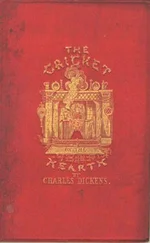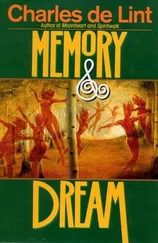Bettina grinned. “Adelita,” she said, starting to turn. “Did you hear? We’re—”
Abuela touched her arm, stopping her.
“Not your sister,” she said. “Only you and me.”
“But—”
“It’s Chehthagi Mashath.” Abuela explained. “The month of the green moon. And we are going on a pilgrimage to Rock Drawn in at the Middle.”
Bettina’s eyes went wide. “But will the O’odham let us?”
Lying west of the Tucson Mountains, the Baboquivari Mountains were a sacred place to the Tohono O’odham, for hidden at the base of the cliffs that formed the walls of Baboquivari Canyon was a cave that was considered a tribal shrine. This was where I’itoi Ki lived, the Coyote-like being responsible for bringing the Desert People into this world. The cave was an antechamber of an enormous labyrinth winding under the Baboquivaris—an image captured by O’odham basketweavers with the design of a small man standing at the beginning of a circular maze.
Because Baboquivari Peak towered over the cave and could be seen from almost every village on the Tohono O’odham reservation, it was considered the heart of the O’odham universe. The Desert People called it Waw Kiwulik, “Rock Drawn in at the Middle,” referring to a long ago time when the granite obelisk was twice its present size. Wishing for more land, tribal elders had gone to I’itoi to ask him to move the mountains and make the valley bigger. He did so, toppling the upper half of the peak. The whole mountain range moved, widening Wamuli valley, but also angering Cloud Man who lived higher up in the mountains. Because of the people’s greed, Cloud Man refused to supply water to the new land, so the O’odham were never able to cultivate that part of the valley.
“Ban Namkam is taking us,” Abuela assured her. “And besides, we’re all Indios.”
“Oh, I like Ban.”
“Sí,” her abuela said, dryly. “That has always been rather obvious.”
Bettina blushed. Lewis Manuel was the son of Abuela’s friend Loleta, a handsome young O’odham that she’d first met at a saguaro fruit-picking camp last year. He was only six years older than her, but he might as well have been a hundred for all the attention he’d paid to her. Among his own people he was known as Ban Namkam—Coyote Meeter—because coyote was the animal he’d met in a vision while undergoing one of the four traditional degrees of manhood. Like most young men today, he probably wouldn’t attain the fourth, since it consisted of killing an enemy tribesman.
“Does Mama know we are going?” Bettina asked to take her grandmother’s attention away from the dismal state of her love life.
“Of course,” Abuela said. “I told her we are going to stay with Loleta for the weekend.”
“But you said—”
Abuela shared a conspiratorial smile. “Chica,” she said. “You know how your mamá worries.”
Yes, Mama worried. And perhaps with good cause, Bettina thought.
Last year Abuela had taken her on another pilgrimage, down into Sonora, Mexico, to fulfil her manda, a secret vow she had made to San Francisco Xavier. They had walked from Nogales all the way to Magdalena, accompanied by dozens of other pilgrims. Each October, during the feast of St. Francis of Assisi, Desert People have made their pilgrimages to the reclining statue of St. Francis which is kept in the church of Magdalena de Kino, in Sonora. The confusion of feast days arose from the disorder that followed the replacement of the Jesuits by the Franciscans some two hundred years ago. The Desert People had been introduced to St. Francis Xavier by the Jesuits. When the Jesuits were expelled, they assumed that the St. Francis of Assisi the Franciscan priests spoke of was the same man.
Bettina had come expecting a fervent religious experience, and she hadn’t been disappointed. The plaza surrounding the cathedral had been full of pilgrims, the new arrivals waiting in line outside the catafalque on which the statue of San Francisco rested in recline. They gathered around the child-sized statue, touching it, thanking him, offering up silent prayers, pinning milagros to his brown Franciscan habit. When her turn came, Bettina had found herself filling up with a great sense of serenity and mystery—more potent than anything she’d known under the desert skies.
This was before Abuela had taken her into la epoca de mito, when myth time still belonged to stories, rather than experience. That day Bettina felt more magic in the catafalque than she’d ever experienced before, and she realized her first difference with her grandmother. Yes, the desert was holy, but to her mind, the church, with its saints and the Virgin, was holier still. On their return to Tucson, she began to attend mass more regularly, which pleased Mama to no end. Bettina had thought that Abuela would be upset, but her grandmother had merely smiled and said, “It doesn’t matter where we find the Mystery, only that we do find her and bring her into our lives.”
But for all the holiness in the cathedral, the fiesta was also a secular affair, an early PapagóPima harvest festival to which the missionaries had merely attached some Christian motifs. When Bettina and her abuela stepped back into the sunlit plaza, it was to see a Yaqui deer dancer preparing to dance, the antlers of his stuffed deer-head mask bedecked with ribbons, rattles of dried cocoons tied to his ankles. From other plazas, and outside the small town, they could hear the rumble of the fiesta as several thousand people celebrated the Feast of St. Francis in their own way, lifting their voices in many languages against a backdrop of mariachi and norteno bands, merchants hawking their wares with amplified loudspeakers that were only a rumbling squawk against the cacophony of carnival rides.
Abuela had taken them first to where the herbal medicines were being sold, replenishing her own stock with herbs grown in wetter lands, necessary medicinal plants that she couldn’t harvest herself in the desert. Then they walked by the booths selling trinkets, hardware, religious paraphernalia such as milagros and postcards of the saints, leather goods, and food. They bought gifts for those back home: cotton print scarves, postcards, a bottle of tequila for Bettina’s father and his peyoteros. Bettina sampled the carnival rides; Abuela haggled with merchants. They admired the fresh produce stands, filled with corn, red chiles, striped squashes, and quinces, and feasted on stuffed chiles, fresh corn on the cob, and bowls of calabacita —boiled squash, chopped up and fried with onions, tomatoes, and asadero cheese. Abuela allowed Bettina a small glass of beer, and they finished their meal with barrel cactus candy and alegrias, cakes of popped amaranth seeds that, except for this fiesta, never reached farther north than Mexico City.
After night fell, they made their way to Calle Libertad, meeting up with friends from home in one of the open-air dance halls where a mariachi band blared tunes on a mix of brass instruments and violins. Bettina tried to stay awake, but by now she’d had a second beer and the mix of the unfamiliar alcohol and the long day finally took its toll. She fell asleep on a chair at the back of the hall. The last thing she remembered seeing was her grandmother happily dancing polkas with her friends.
When they returned home, Mama had been furious, but Abuela, as usual, was unrepentant. Mama hadn’t spoken to Abuela for a week after that, filling the house with a dark silence that touched everyone. Bettina wasn’t eager to repeat that part of the experience.
“Wouldn’t it be better to tell her the truth?” she said to her grandmother.
Читать дальше












